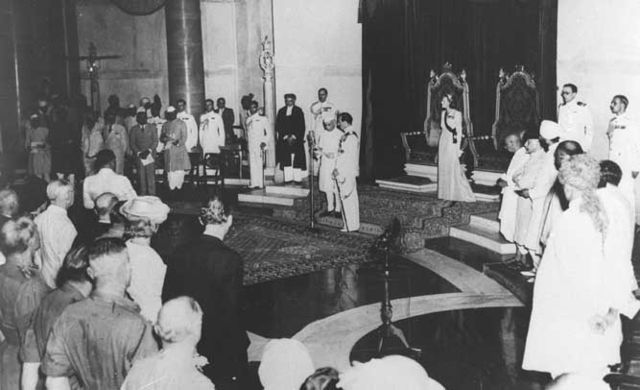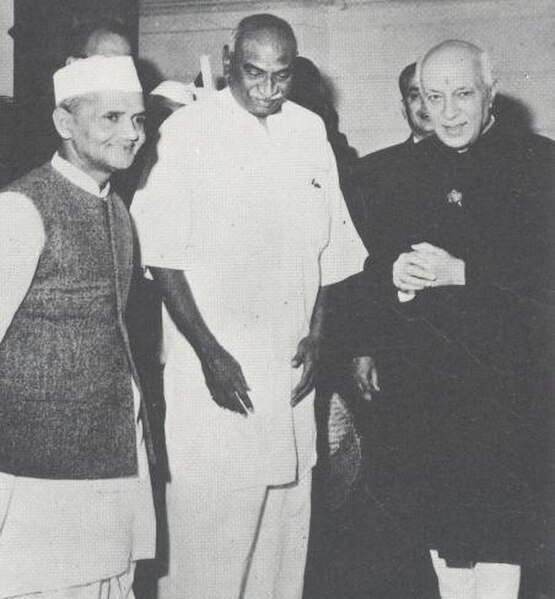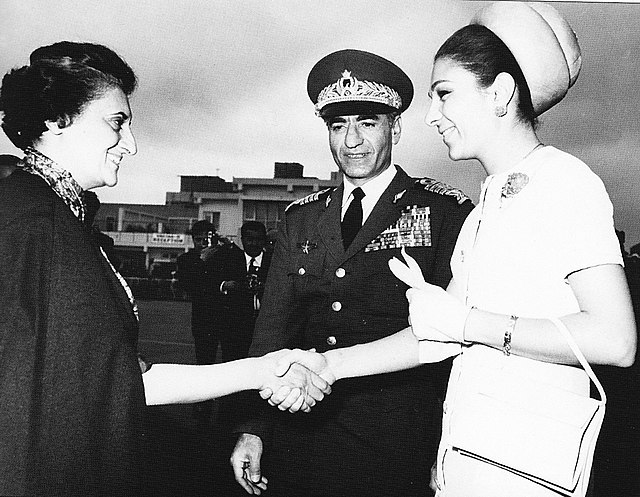Indira Gandhi was an Indian politician who served as the third Prime Minister of India from 1966 to 1977 and again from 1980 until her assassination in 1984. She was India's first and, to date, only female prime minister, and a central figure in Indian politics as the leader of the Indian National Congress. Gandhi was the daughter of Jawaharlal Nehru, the first prime minister of India, and the mother of Rajiv Gandhi, who succeeded her in office as the country's sixth prime minister. Furthermore, Gandhi's cumulative tenure of 15 years and 350 days makes her the second-longest-serving Indian prime minister after her father. Henry Kissinger described her as an "Iron Lady", a nickname that became associated with her tough personality since her lifetime.
Young Indira with Mahatma Gandhi during his fast in 1924. Indira is dressed in a khadi garment and shown following Gandhi's advocacy that khadi be worn by Indians instead of British-manufactured textiles.
Indira Gandhi with Australian Prime Minister John Gorton in 1968
Indira Gandhi with U.S. President Richard Nixon, 1971
Indira Gandhi on 21 March 1977
The prime minister of India is the head of government of the Republic of India. Executive authority is vested in the prime minister and his chosen Council of Ministers, despite the president of India being the nominal head of the executive. The prime minister has to be a member of one of the houses of bicameral Parliament of India, alongside heading the respective house. The prime minister and their cabinet are at all times responsible to the Lok Sabha.
Lord Mountbatten swears in Jawaharlal Nehru as the first Prime Minister of India on 15 August 1947.
Lal Bahadur Shastri, K. Kamaraj, and Nehru, ca. 1963
Shah Mohammad Reza Pahlavi and Shahbanu Farah Pahlavi of Iran being received by prime minister Indira Gandhi at New Delhi airport, 1970
Queen Beatrix of the Netherlands, left with PM Rajiv Gandhi, Prince Claus, and Sonia Gandhi, The Hague, 1985








